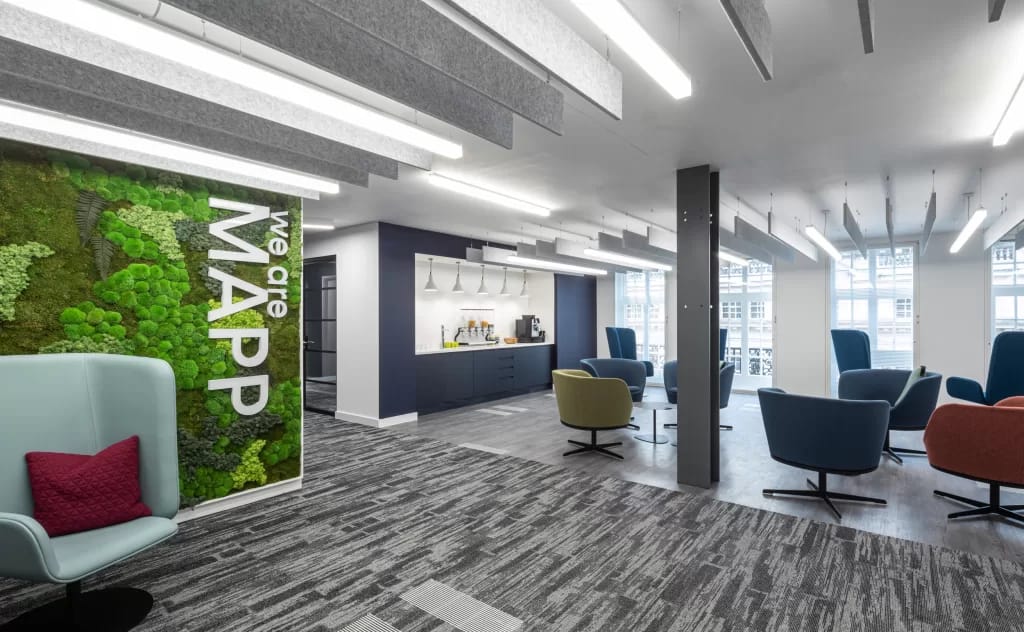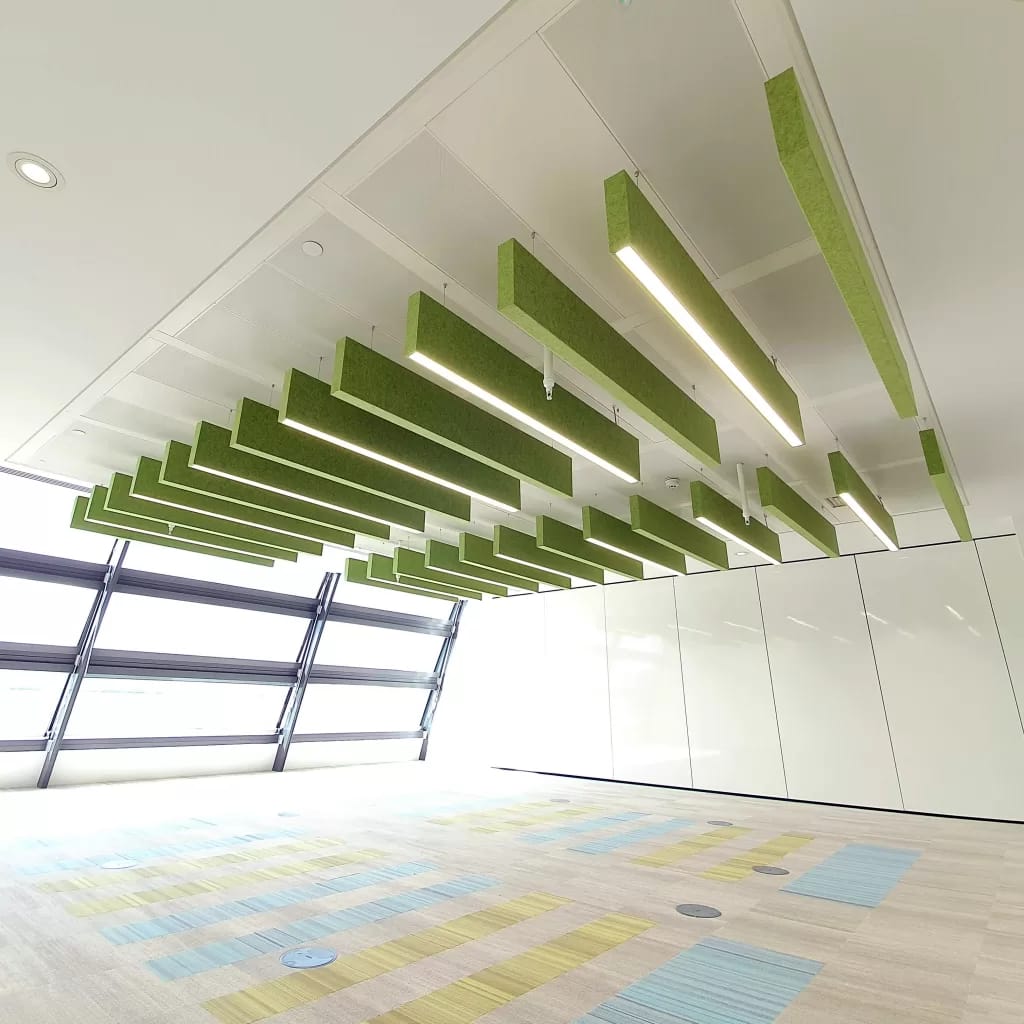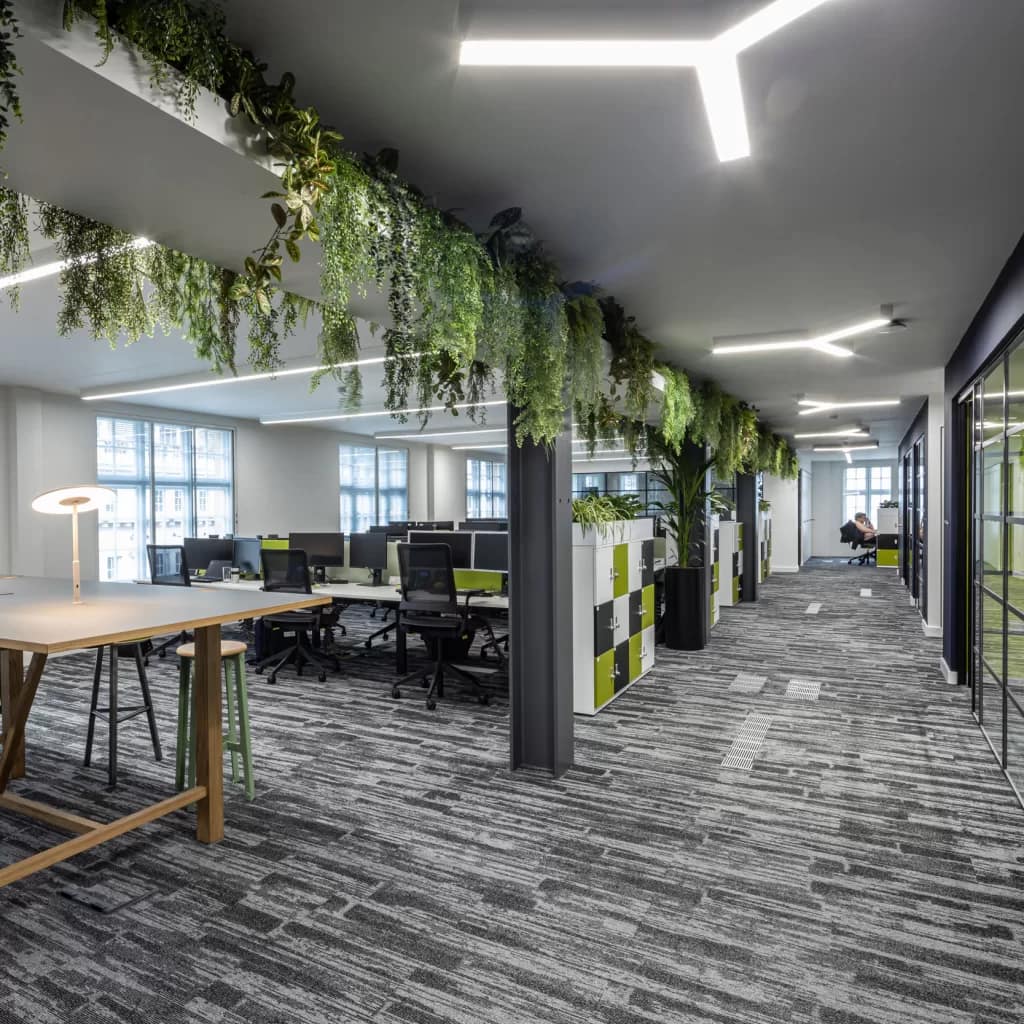Blog
Human Centric Office Design – Fostering Productivity and Wellbeing
In the ever-evolving world of business, one factor stays constant: the importance of the human element. As companies strive to create a conducive and inspiring work environment, the concept of human centric office design has gained traction. Emphasising the well-being and productivity of employees, this approach redefines traditional office spaces and fosters a harmonious balance between aesthetics and functionality.
A Holistic Approach to Office Design
The essence of human centric office design lies in acknowledging the unique needs and preferences of employees. Gone are the days of cookie-cutter cubicles and sterile settings. Today, successful businesses prioritise a holistic approach that revolves around employee comfort and happiness.
This design philosophy considers several factors, such as natural lighting, ergonomic furniture, temperature control, noise reduction, and air quality. By thoughtfully integrating these elements, employers create a nurturing environment that allows employees to flourish.

The Power of Natural Light
Incorporating ample natural light is at the core of human centric office design. Sunlight not only supplies essential vitamin D but also significantly affects mood and productivity. Designing offices with large windows and open spaces not only reduces reliance on artificial lighting but also connects employees with the external environment, fostering a sense of unity with nature.
However, the quest for the perfect balance between natural and artificial lighting doesn’t end with the sun’s rays. Human centric office design also embraces the concept of circadian lighting. Inspired by the natural progression of daylight throughout the day, circadian lighting systems simulate these changes to mimic the body’s internal clock.
Ergonomics: Putting Comfort First
Long hours spent at desks can lead to various health issues. However, ergonomic office furniture can help mitigate these problems. From adjustable chairs and sit-stand desks to wrist-supporting keyboards, investing in ergonomic solutions ensures the well-being of employees and minimises discomfort or strain caused by extended periods of sitting.
Striking the Right Balance: Noise and Privacy
Office chatter and constant distractions can hamper concentration and creativity. Human centric office design incorporates acoustic solutions that reduce noise levels and provide employees with a sense of privacy. This can range from acoustic panels on walls and ceilings to appointed quiet spaces for focused work or rejuvenating breaks.

Air Quality and Indoor Plants
Clean and fresh air is essential for cognitive function and overall health. Installing efficient ventilation systems and incorporating indoor plants can significantly improve air quality. Plants not only enhance aesthetics but also function as natural air purifiers, absorbing harmful pollutants and emitting oxygen, contributing to a healthier work environment.

Flexibility and Collaboration
Human centric office design also emphasises the importance of flexible workspaces that cater to different work styles. Incorporating collaborative areas, cosy corners, and open meeting spaces encourages teamwork, creativity, and idea sharing. Employees feel empowered to choose the setting that best suits their tasks, promoting a sense of autonomy and efficiency.
Colour Psychology and Mood Enhancement
The careful choice of colours can influence mood and productivity. Warm colours like yellow and orange can evoke feelings of energy and enthusiasm, while cool colours like blue and green promote calmness and focus. Human-centric office design takes advantage of colour psychology to create an emotionally balanced workplace that motivates employees throughout the day.
In the United Kingdom, as elsewhere in the world, human centric office design is transforming the traditional workplace into an inspiring and supportive environment. By considering the physical, mental, and emotional well-being of employees, businesses are realising that investing in their workforce pays off manifold. A happy and motivated workforce leads to increased productivity, reduced turnover, and a positive company culture. Embrace human-centric office design and see the transformative impact it can have on your organisation’s success.



